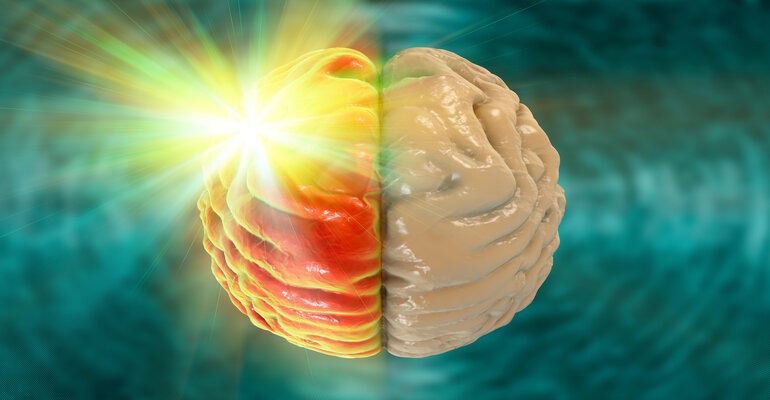Study shows positive safety and efficacy data when using the Nerivio device.

Theranica Bio-Electronics, a prescribed digital therapeutics company developing digitally connected neuromodulation devices for migraines — among other pain conditions, today announced positive results in a double-blind, randomized, placebo-controlled, multi-center, pivotal clinical trial in the United States (NCT04828707). The trial examined efficacy and safety of its Nerivio device for the preventative treatment of migraines in both episodic and chronic migraine patients.
Nerivio is a neuromodulation device FDA approved for the acute treatment of migraines with or without aura in patients 12 years old and over. The device uses electro stimulation to achieve conditioned pain modulation (CPM). CPM stimulates endogenous analgesic mechanisms. Treatments using the device are self-administered at the onset of a migraine attack and operated through an app on the user’s smartphone – currently only available on iPhone and Android. Included in the app is a migraine diary to track treatment sessions and symptoms. The diary can then be shared between patients and their healthcare provider.
In partnership with the app, the Nerivio device is applied to the upper arm using a provided armband. Once switched on, electrical signals begin to inhibit incoming pain. The intensity of the treatment can be increased or diseased in the app. It is recommended to wear Nerivio for 45 minutes to get the best results.
The recent study on Nerivio consisted of a screening/enrollment visit, followed by a four-week (28 days) baseline phase, an eight-week double-blind preventative treatment phase, and a four-week open-label phase. The 248 study participants were randomly split into two arms: the active Nerivio arm, or the sham Nerivio arm. Patients included in the study were instructed to use their devices every other day. Meeting its primary endpoint, subjects in the active arm experienced a reduction of 4.0 migraine days per month from baseline while placebo saw a 1.3-day reduction (net therapeutic gain of 2.7 days, p < 0.0001). Further analysis showed a reduction of monthly migraine days specifically for chronic migraine participants, equaling 4.7 days (placebo:1.6 days, p = 0.001) vs. Episodic migraine patients (active: 3.2 days; placebo: 1.6 days, p = 0.003).
Statistically significant positive results were also shown in the mean reduction of monthly headache days (active: 4.5-day reduction, placebo: 1.8, p < 0.0001) and moderate to severe headache days (active: 3.8 days; placebo:2.2, p = 0.005), percentage of patients experiencing a reduction of headache days and moderate to severe headache days, mean reduction of acute-medication days (active: 3.5 days; placebo: 1.4, p = 0.001), and more.
Of note, 40% of all study participants used concomitant preventive medications. This mainly included prescribed oral medications, CGRP monoclonal antibody injections and onabotulinumtoxinA (Botox) injections. A separate analysis of this population was similar to that of the general study population, including a reduction of monthly migraine days by a gap over placebo (active: 3.5 days; placebo: 1.5, p = 0.03).
"These data demonstrate Nerivio's potential to provide a new non-pharmacological preventive treatment option for people with migraine,” said Brian Grosberg, MD, director of the Hartford Healthcare Headache Program in Connecticut and primary investigator of the study. “The high efficacy of Nerivio compared to placebo, with favorable safety and tolerability, suggests that Remote Electrical Neuromodulation (REN) could be a beneficial non-pharmacological therapy option for both preventive and acute treatment of migraine, subject to FDA approval."
Study authors noted that the study results were obtained both on the entire Intent-to-Treat dataset of 248 subjects as well as the most adherent modified dataset of 179 patients. Of all patients involved, only one mild device-related adverse event (AE) was reported and occurred in the placebo group. The AE was resolved quickly without intervention.
Nerivio isn’t the only drug-free migraine treatment currently on the market. Two competitors include Cefaly and eNeura’s sTMS device. However, Nerivio boasts its status of being the first FDA-approved smartphone-controlled drug-free migraine device available, according to the company.
"There is a growing recognition that certain chronic pain diseases, such as migraine, may be treated with therapies other than pharmacological agents, or in combination with those,” said Alon Ironi, CEO of Theranica. “This is validated by clinical evidence from randomized controlled studies such as this one, as well as real-world evidence studies. It is well-known that individuals with migraine have varied responses to therapies, and sometimes respond best to a combination of different modalities. The results of this study further support the notion that migraine care should develop beyond solely pharmaceuticals, and Theranica is a leader in scientifically exploring and applying this novel non-pharmacologic approach for patients and providers."
About the Author(s)
You May Also Like




